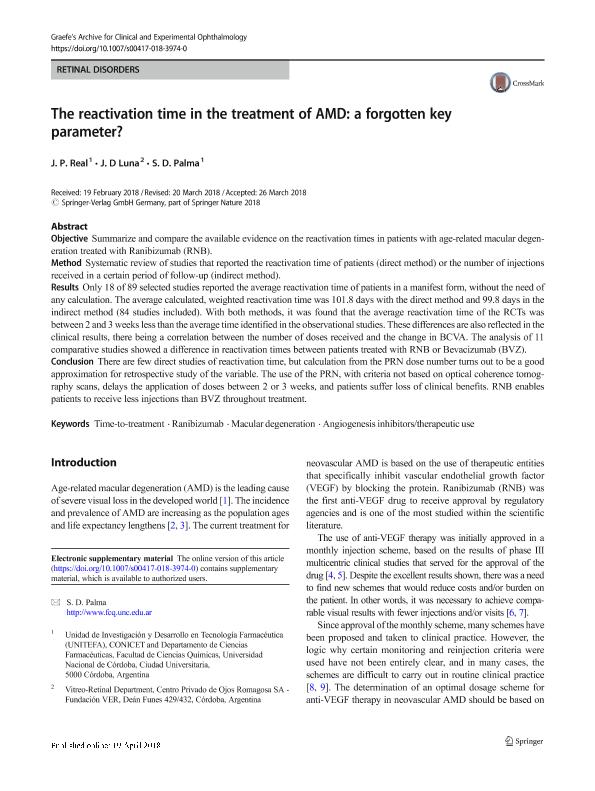Artículo
The reactivation time in the treatment of AMD: a forgotten key parameter?
Fecha de publicación:
06/2018
Editorial:
Springer
Revista:
Graefes Archive For Clinical And Experimental Ophthalmology
ISSN:
0721-832X
Idioma:
Inglés
Tipo de recurso:
Artículo publicado
Clasificación temática:
Resumen
Objective: Summarize and compare the available evidence on the reactivation times in patients with age-related macular degeneration treated with Ranibizumab (RNB). Method: Systematic review of studies that reported the reactivation time of patients (direct method) or the number of injections received in a certain period of follow-up (indirect method). Results: Only 18 of 89 selected studies reported the average reactivation time of patients in a manifest form, without the need of any calculation. The average calculated, weighted reactivation time was 101.8 days with the direct method and 99.8 days in the indirect method (84 studies included). With both methods, it was found that the average reactivation time of the RCTs was between 2 and 3 weeks less than the average time identified in the observational studies. These differences are also reflected in the clinical results, there being a correlation between the number of doses received and the change in BCVA. The analysis of 11 comparative studies showed a difference in reactivation times between patients treated with RNB or Bevacizumab (BVZ). Conclusion: There are few direct studies of reactivation time, but calculation from the PRN dose number turns out to be a good approximation for retrospective study of the variable. The use of the PRN, with criteria not based on optical coherence tomography scans, delays the application of doses between 2 or 3 weeks, and patients suffer loss of clinical benefits. RNB enables patients to receive less injections than BVZ throughout treatment.
Archivos asociados
Licencia
Identificadores
Colecciones
Articulos(UNITEFA)
Articulos de UNIDAD DE INVESTIGACION Y DESARROLLO EN TECNOLOGIA FARMACEUTICA
Articulos de UNIDAD DE INVESTIGACION Y DESARROLLO EN TECNOLOGIA FARMACEUTICA
Citación
Real, Juan Pablo; Luna, J. D.; Palma, Santiago Daniel; The reactivation time in the treatment of AMD: a forgotten key parameter?; Springer; Graefes Archive For Clinical And Experimental Ophthalmology; 256; 6; 6-2018; 1079-1087
Compartir
Altmétricas




